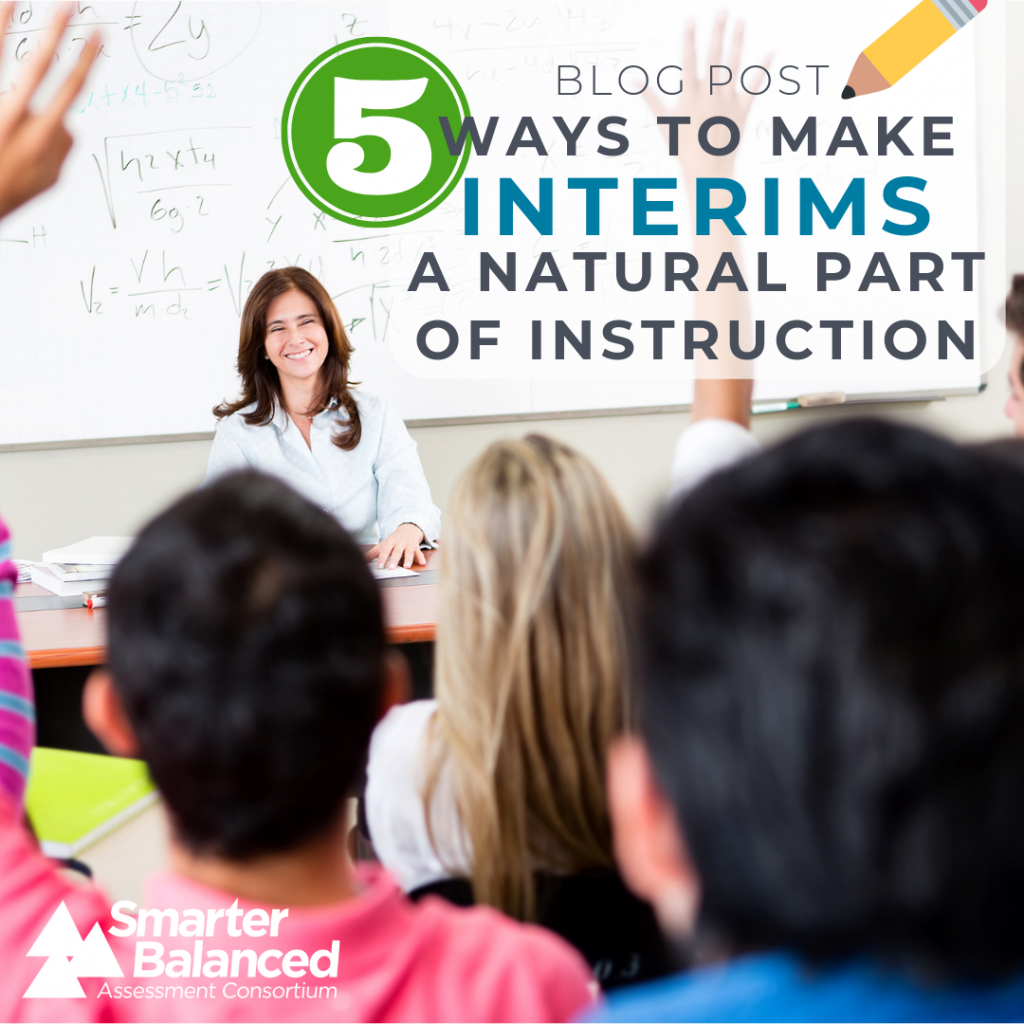5 Ways to Make Interims a Natural Part of Instruction

Elizabeth Johnston, Guest Blogger
English Language Arts Teacher (7th Grade)
Have you used interim assessment blocks (IABs) with your students? Do you use them as a common assessment with your team to identify student needs? Or maybe your district uses them as a tool to review student progress?
Weaving interims into classroom activities is a natural way to connect teaching and assessment. It isn’t difficult once you get the hang of it. The following list includes a few ways that my team and I have used interim assessments as a part of our regular classroom routines.
- One Question a Week
Don’t be afraid to break it up. The interims can be accessed in multiple ways for you to view the questions. Give students one question a week for practice, for review, and for teaching moments. This way, you can spend more time on each question and really dig into student responses and misconceptions. This provides an opportunity for teachers to support students with the ins-and-outs of the skills required. - Give it to Groups
Break the test up in your class and give each question to a group to dissect and discuss. Have them carefully decide on the right answer and give rationale for the wrong answers (aka, distractors). Provide students the opportunity to present to the class or to just be the “experts” in a class discussion of the questions, such as a Jigsaw activity. - Student Scoring
One of my favorite things to do with short-answer or extended written-response questions is to have students learn how to score them. Have you ever used the scoring guides and anchor sets? Interim specific scoring guides are available through the secure testing applications, like TIDE (or the equivalent in your state).
We make those anchor sets available for our students and train them with the first set — just like teachers learning to score — and then we go through the practice set together. After that, we give them sets with the classes’ answers to score (without names, of course). This not only gives them a great sense of the expectations and where those lines of scoring are placed, but it also gives them authentic practice evaluating their work. - Do it Together
Sometimes it is helpful to the students just to do the questions together and discuss the questions and answers. This is going to be more productive if your students are extremely behind and struggling with the content. You can clue them in on strategies and hopefully give them some “aha” moments that they can use when they are working independently. - Assess for Gaps
Sometimes you want to – or are required to — give the interim assessment traditionally, like you would give the summative. If that is the case, it can be a great opportunity to look for gaps, give some lessons to fill in holes, and fix misunderstandings. Connections Playlists and instructional resources are a great resource for this. The playlists are a starting point, organized by the assessment, and then by the skills, to find lessons that might fit the needs of your students.
I’m sure there are many other ways to use the interims that I haven’t thought of yet and I’d love to hear about them! This list will give you some ideas to use the interims as a part of your teaching and assessment in a way that is a natural part of your instruction, engaging for your students, and a great way to get more insight into your students’ skills and knowledge. I challenge you to try one, or more, of these in your classroom and make them your own. Please share what you try and how it works out!

About our Guest Blogger
Elizabeth Johnston is a secondary certified, middle-level 7th grade teacher in Shelton, WA, a rural community with a diverse population. She has taught high school and middle school for over a decade. She has her M.Ed. and certifications in ELA, ELL, Drama, and Middle Level Humanities. After moving to the Northwest as a child, she cannot imagine living in a more beautiful place (but sometimes wishes for a little more sunshine).
In her non-teaching hours, she loves to spend time with her husband and son, play board games, sew/craft/quilt, and read (she DOES teach ELA). Elizabeth aspires to be more into fitness and the outdoors but finds a comfy chair and a good book/movie mightily appealing.
Elizabeth Johnston can be found on Twitter at @ejohnstonteach
